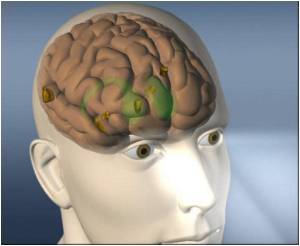Two different brain imaging techniques were used to track brain development in children to understand the process of myelination.

‘The two techniques called DTI and mcDESPOT enable researchers to measure the amount of myelin and provide the images of nerve cells and brain structures.’





A recent study led by Doug Dean III of the Waisman Center at the University of Wisconsin-Madison and published in the journal NeuroImage combined two related but different imaging techniques to non-invasively track the rate at which nerve fibers in children's brains become wrapped in myelin. "Having a non-invasive way to quantitatively map the thickness of myelin sheaths around nerve fibers will help us learn more about how the brain develops and when new nerve connections are made," says Dean.
It could also lead to new findings of diseases like multiple sclerosis and leukodystrophies, in which the myelin sheath is damaged.
Additionally, Dean says, there are several neurodevelopmental disorders with no known causes and "understanding how myelination proceeds in typically developing brains could tell us if these disorders are linked to defects in myelination."
In general, the thicker the myelin sheath, the quicker the speed of nerve impulses along that nerve fiber. To non-invasively measure, the thickness of the myelin sheaths, Dean and his colleagues enhanced and combined two existing techniques that are variations of magnetic resonance imaging, or MRI.
Advertisement
One of the MRI-based techniques used by Dean, called DTI, provides highly detailed images of nerve fibers and other structures in the brain. But these images aren't very helpful for researchers who are trying to determine the thickness of myelin fibers.
Advertisement
While each imaging technique provides valuable information, by themselves they paint only a hazy portrait of myelin thickness. By combining these two methods, Dean and his study colleagues were able to not only image nerve fibers and other structures in the brain, they could also calculate the size of these nerve fibers and the amount of myelin surrounding them.
For the study, the researchers captured brain images from several children, ranging in age from around 4 months to more than 7 years, and used the combined techniques to calculate myelin thickness. These measures closely matched what other researchers had predicted using theoretical models.
"That shows the accuracy of our imaging techniques and calculations," says Dean, though he notes that while the initial results are "very encouraging," additional studies using animal models or preserved human brains are necessary to further test their findings.
While it could be years before this technology yields new diagnostic or therapeutic approaches, Dean says the study is an important first step toward understanding a vital stage of early human development.
Source-Eurekalert














